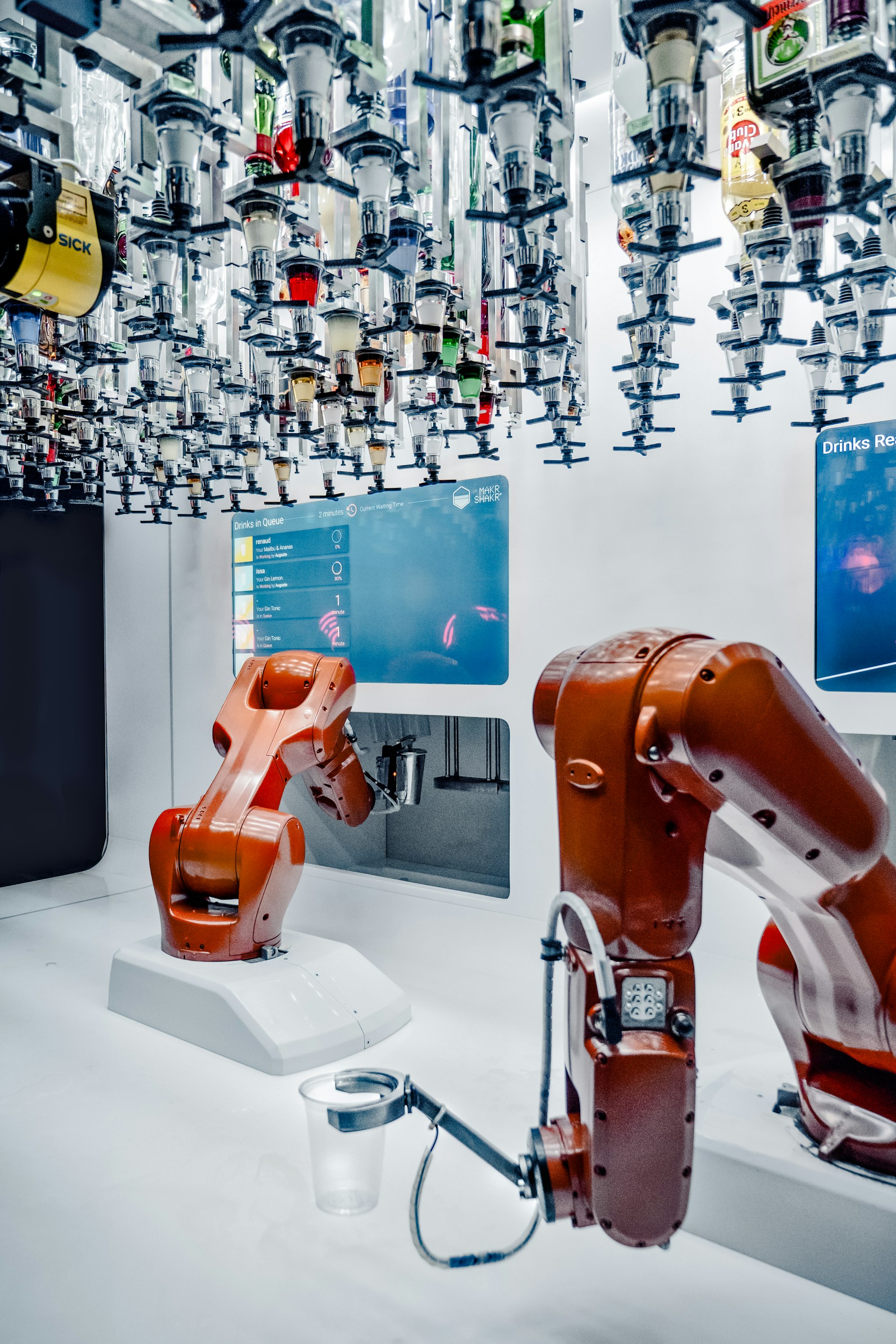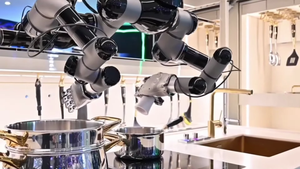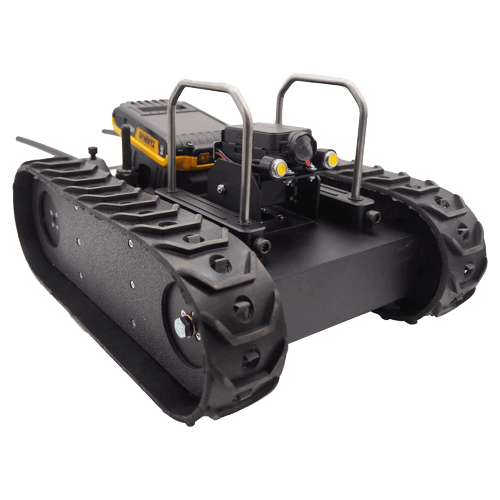In the grand tapestry of human innovation, the automotive industry has always held a prominent place, weaving together threads of engineering, design, and technology to create products that have become an indispensable part of our lives. But this story isn't just about the cars we drive. It's about the unseen hands that build them — robotic hands, to be precise.
Remember the memorable quote from Transformers,
"Freedom is the right of all sentient beings."?
Well, in the realm of car manufacturing, freedom and efficiency have taken on a new meaning with the advent of robotics.
The journey of robotics in the automotive industry, my dear readers, is akin to a blockbuster movie with its fair share of action, drama, and plot twists. It's a tale that starts with the clunky, single-task machines of yesteryears and leads us to today's agile, intelligent robots that can assemble a car with the precision of a Swiss watchmaker.
As your guide through this incredible narrative, I will be your Will Smith in I, Robot, leading you through the intricate world of robots revolutionizing the car manufacturing industry. So, buckle up and get ready for a ride that promises to be as exhilarating as a spin in a top-of-the-line sports car.
The automotive industry has always been a pioneer when it comes to embracing change, and the case of robotics is no different. The story of robots in car manufacturing has its roots in the 1960s, with the first industrial robot, Unimate, joining the assembly line at a General Motors plant. The introduction of Unimate marked a significant turning point in the industry.
Fast forward to the 1980s, and we find another key development:
the introduction of programmable robots.
Remember the movie Short Circuit? Much like Johnny 5, these robots could learn new tasks and adapt to changes. Suddenly, robots were no longer confined to simple, repetitive tasks; they could be programmed to perform complex operations, leading to unprecedented improvements in efficiency and accuracy.
The 21st century brought with it even more advancements, introducing us to robotics with Artificial Intelligence (AI). Imagine the robots from Ex Machina, capable of 'thinking' and making decisions on their own.
Now, AI-driven robots are crucial players in the automotive industry, working side by side with humans in a 'cobotic' environment, undertaking complex tasks such as precision welding, paint jobs, and even quality control.
Today, robots are not just a part of the assembly line; they are the assembly line. They're like Kevin Flynn from TRON, creating, innovating, and driving the digital frontier forward. From the single-task machines of the 1960s to the AI-powered cobots of today, the journey of robotics in the automotive industry has indeed been revolutionary.
The automotive industry isn’t just about creating the sleekest designs or the fastest engines. At the heart of it, it's about ensuring that every person inside the vehicle is safe. This is where our robot friends have shown exceptional prowess. They have stepped up to the plate and hit a home run, enhancing safety standards like never before.

In a similar vein, our modern industrial robots, equipped with advanced sensors and imaging technology, can scan automotive parts with microscopic precision, identifying even the tiniest defects that could potentially compromise safety.
But it's not just about spotting defects. These robots are also masters of consistency, performing each task to the same high standard, over and over again. Remember Wall-E from Wall-E?
He spent hundreds of years compacting trash, never missing a beat. Similarly, industrial robots can perform repetitive tasks without the risk of human error, leading to a significant reduction in accidents caused by fatigue or lack of concentration.
Let's consider an example. BMW's production plant in Spartanburg, South Carolina, implemented robotics in their assembly line.
The result?
The plant's production efficiency skyrocketed, and more importantly, workplace accidents decreased substantially. This is just one of the many examples demonstrating how robots have contributed to enhancing safety in the automotive industry.
To quote Tony Stark from Iron Man,
"I just finally know what I have to do. And I know in my heart that it's right."
Robots, my dear readers, know exactly what they have to do, and they do it right, every single time, creating a safer environment for everyone involved in the process.
FUN FACTS:
Every good story has a sprinkle of fun facts, and the narrative of robotics in the automotive industry is no exception. Buckle up, dear readers, as we dive into some entertaining trivia that will make you the star of your next dinner party conversation.
First Robot on the Assembly Line: Let's kick off with the star of the show - the first industrial robot. Meet Unimate, a 4000-pound arm that started working at a General Motors plant in 1961. This mechanical maestro could perform 24-hour shifts and never asked for a coffee break. I can't help but picture the tireless T-800 from The Terminator.
Robot Dress Code: You heard it right. Robots in car manufacturing have a dress code. In many factories, robots are painted different colors based on their job role. Just like the Power Rangers from Power Rangers - each color signifies a unique power!
Robotic Olympics: Did you know there's a Robotic Olympics? Known as RoboGames, this annual event showcases robots from around the world competing in various categories. It's just like the Quidditch World Cup in Harry Potter and the Goblet of Fire, but with less flying and more... well, robotics!
The Fastest Robot: The title of the fastest robot in the world goes to the FlexPicker from ABB. This lightning-fast device can sort up to 500 items per minute. It's like Flash from Justice League has taken up a part-time job in the automotive industry.
Robotic Artists: Robots aren't just about hard work; they have a creative side too. A robot named Da Vinci can paint cars with such precision and consistency that it would make even Picasso jealous!
As a kid, I was always awestruck by the Batmobile in Batman. The futuristic design, the incredible capabilities - it was the epitome of innovation.
Today, the automotive industry is living its own Batman moment, with robotics pushing the boundaries of what's possible, just like the Batmobile did for a young me.

In the design phase, robots have ushered in a new era of precision and flexibility.
Advanced CAD systems coupled with AI technology enable robots to create 3D models with astonishing accuracy, allowing engineers to visualize and modify designs in real-time.
It's as if the magic wand from the Harry Potter movies has found its way into our automotive factories, creating and altering designs with a simple wave.
Speaking of magic, have you seen the robotic exoskeletons used in manufacturing?
Straight out of an Iron Man movie, these wearable machines augment human capabilities, reducing strain and increasing productivity.
Workers can lift heavy components as if they were feathers, reducing the risk of injury and fatigue. Now that's what I call a superpower!
Then we have the autonomous guided vehicles (AGVs) zipping around the factory floor, transporting parts from one station to another. It's like watching Herbie: The Love Bug, except instead of a Volkswagen Beetle competing in a race, we have AGVs ensuring that the assembly line never runs out of parts.
The assembly line itself has seen a paradigm shift with the introduction of collaborative robots, or cobots. Working hand-in-hand with their human counterparts, cobots are designed to operate safely alongside people, lending a helping hand (or arm, in this case) wherever needed.
In the world of robotics, the only constant is change.
With each passing day, we are witnessing groundbreaking technologies that are propelling the automotive industry into a future that promises to be as exciting as any Hollywood blockbuster.
Even the fastest race car has to slow down for a pit stop, and the journey of robotics in the automotive industry is no different. There are challenges, speed bumps if you will, that we need to navigate as we cruise into the future.

Remember the scene from I, Robot where Will Smith's character distrusts robots? Well, that's not entirely fiction. One of the key challenges is the human factor - the reluctance to trust robots with tasks traditionally performed by humans. It's a bit like handing over the keys to your brand new car to a teenager - you're not sure if they'll take care of it.
The high cost of robotics technology is another challenge. While there's no denying the long-term benefits, the initial investment can be a hard pill to swallow. We're not talking about the cost of a new Fast and Furious car here; setting up a fully automated production line can run into millions of dollars.
However, despite these challenges, the road ahead is brimming with possibilities. Experts predict an exponential growth in the adoption of robotics in the automotive industry. Autonomous vehicles, once the stuff of sci-fi movies, are becoming a reality, with companies like Tesla and Waymo leading the charge.
We're also seeing advancements in AI technology that promise to make our robotic helpers even more efficient. Picture Jarvis from Iron Man - an AI so intelligent, it can manage Tony Stark's entire workshop. We're not there yet, but with machine learning and AI, we're getting closer every day.
As we cruise to the end of this thrilling journey, it's hard not to marvel at how far we've come. From the introduction of Unimate on the factory floor to the creation of autonomous vehicles, robotics has truly revolutionized the automotive industry.

We've navigated through the twists and turns of this transformative journey, stopping to admire the beauty of streamlined production lines, the reassuring presence of enhanced safety measures, and the excitement of groundbreaking innovations. Sure, there are challenges, but isn't that what makes the journey exciting? Like Rocky Balboa in Rocky, we don't shy away from challenges; we rise to meet them.
In the words of Mad Max:
"Where must we go, we who wander this wasteland, in search of our better selves?"
For the automotive industry, the answer is simple: towards a future where robots are our partners, transforming the way we design, build, and drive cars.
As we gaze at the horizon, there's no doubt that the road ahead is filled with exciting possibilities. So, dear reader, buckle up and enjoy the ride. It's going to be one heck of a journey, one that promises to be as thrilling and transformative as any blockbuster movie.





